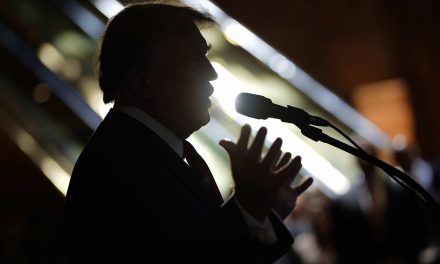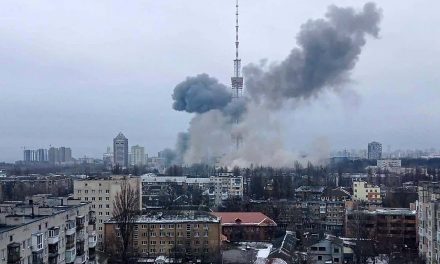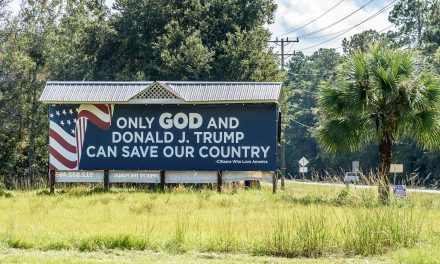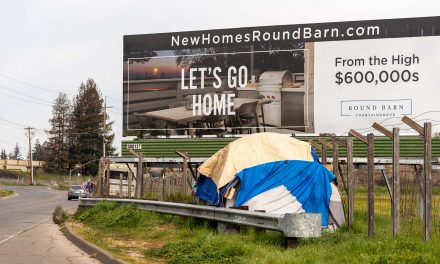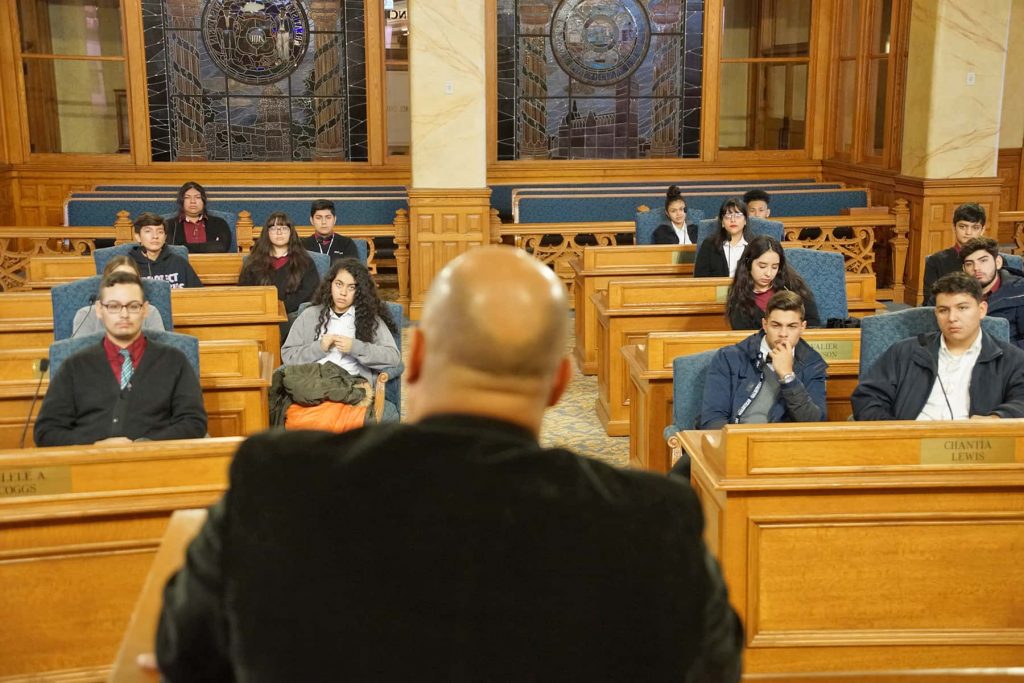
Civil society requires that its citizens feel safe in public spaces; destroy that generalized sense of safety and you will radically warp public opinion to the Right, which promises safety and “tough on crime,” while producing a whole new generation of safe-space destroyers.
Our most fragile members of society are our children, which is why when shooters go after schools it disrupts society at its most fundamental level. Right behind schools are celebratory events (Vegas shooter, yesterday’s Trump supporter), stores/theaters, and places of worship.
If a malignant actor — say, Putin — wanted to truly disrupt American society, all he’d have to do is flood the country with weapons of war. If he could help reach some critical threshold — in most of Europe there are 15 to 20 weapons per 100 people as it was here 40 years ago; in America now, though, it is over 120 per 100 — he could sit back, stir up a little political agitation, and watch the fireworks from afar.
Which reminds me of the September 17, 2019 article from National Public Radio (NPR):
“The National Rifle Association acted as a ‘foreign asset’ for Russia in the period leading up to the 2016 election, according to a new investigation…”
Or the April 11, 2018 piece in Politico that opened with:
“The National Rifle Association reported this week that it received more money from people with Russian ties than it has previously acknowledged, but announced that it was officially done cooperating with a congressional inquiry exploring whether illicit Kremlin-linked funding passed through the NRA and into Donald Trump’s 2016 presidential campaign…”
The Committee then failed to issue or enforce a subpoena. But the NRA probably was not intending to disrupt American civil society, and Putin maybe just thought it would be nice to give the NRA money and support – and host Senators Ron Johnson, John Kennedy, and six other Republicans for the 4th of July.
Setting aside the conspiracy theory — regardless of how we got over 400 million guns in this country, almost all of them since the Reagan Revolution, earning billions for the weapons industry — we have a problem.
There are more car accidents in New York City than in Boise because there are so many more cars. That just makes sense. That’s also why there are more shootings where there are more guns.
And now — thanks to last month’s Supreme Court ruling — there are and will be more guns everywhere in America. No place is safe any more. How did we get here?
Republican politicians keep repeating the lie that the Framers of the Constitution wrote the 2nd Amendment so future generations could shoot at corrupt politicians. Of course, there was never even any such discussion; the idea is absurd now and was equally absurd then.
The Second Amendment came out of two concerns the Founders had. The first concern was that they had seen, repeatedly over the centuries, standing armies during time of peace rise up and overthrow European nations’ governments, drenching them in “a sea of blood.”
To solve that problem, they intended what Switzerland had done: every state (canton) had its own militia, and if the nation as a whole is attacked the militias come under federal control. In addition to the Second Amendment, this is actually specified twice in Article 1, Section 8 of the Constitution:
“The Congress shall have Power To … provide for calling forth the Militia to execute the Laws of the Union, suppress Insurrections and repel Invasions” and
“The Congress shall have Power To … raise and support Armies, but no Appropriation of Money to that Use shall be for a longer Term than two Years…”
The reason Congress can only appropriate money for two years to fund the Army — when it can, for example, appropriate 50 years worth of monies to support the railroads or roadways — was because the Framers wanted to force Congress, every two years, to reconsider if the Army was even needed at all.
If it was peacetime, they hoped, future administrations would just let it go and rely on the state militias. That idea evaporated with the War of 1812. Prior to that, President Jefferson inherited around 300,000 men from the Washington/Adams administrations’ post-Revolutionary War Army, and he shrunk it to under 10,000 during his 8 years in office.
But when the British invaded from Canada, the state militias weren’t up to the task: Redcoats made it all the way to Washington, DC and burned the White House.
Ever since then, military appropriations have been routine and the state militias — the National Guard — have turned to disaster relief and being a reserve backup for the federal Army.
But when the Constitution was being written, this was a really hot idea. James Madison’s first draft for what became the Second Amendment had said:
“The right of the people to keep and bear arms shall not be infringed; a well armed, and well regulated militia being the best security of a free country: but no person religiously scrupulous of bearing arms, shall be compelled to render military service in person.”
That makes it pretty clear this is all about a militia/Army that can defend the nation, not personal self-protection or shooting at errant politicians or wannabee tyrants.
But why did the word “nation” get changed to “state” giving us today’s Second Amendment?
“A well regulated Militia, being necessary to the security of a free State [emphasis mine], the right of the people to keep and bear Arms, shall not be infringed.”
That’s a most fascinating story, as I lay out in The Hidden History of Guns and the Second Amendment.
The second, adopted version of that Amendment was changed to its current form to accommodate the southern states, which was necessary to get Virginia’s vote. Founders and Virginians Patrick Henry, George Mason, and James Madison were totally clear on that … and we all should be too.
This was the second big reason why the Second Amendment was placed in its current form into the Constitution.
In the beginning, there were the militias, as mentioned, left over from the Revolutionary War. But in the South they predated that War by two centuries and were also called “slave patrols.” And rebellions by enslaved people were keeping the slave patrollers busy.
By the time the Constitution was ratified, hundreds of substantial slave uprisings had occurred across the South. Blacks outnumbered whites in large areas, and the state militias were used to both prevent and to put down slave uprisings.
Slavery can only exist in the context of a police state, and the enforcement of that police state was the explicit job of the slave patrol militias.
If the anti-slavery folks in the North had figured out a way to disband — or even move out of the state — those southern militias, the police state of the South would collapse.
And, similarly, if the North were to invite into military service the enslaved people of the South, then they could be emancipated, which would collapse the institution of slavery, and the southern economic and social systems, altogether.
These two possibilities worried southerners like James Monroe, George Mason – who owned over 300 slaves, and the southern Christian evangelical who famously proclaimed “Give me liberty or give me death,” Patrick Henry – the largest slaveholder in Virginia.
Their main concern was that Article 1, Section 8 of the newly proposed Constitution, which gave the federal government the power to raise and supervise a militia, could also allow that federal militia to subsume their state militias and change them from slavery-enforcing institutions into something that could even, one day, free those enslaved people. This was not an imagined threat.
Famously, 12 years earlier, during the lead-up to the Revolutionary War, Lord Dunmore offered freedom to slaves who could escape and join his forces. “Liberty to Slaves” was stitched onto their jacket pocket flaps. During the War, British General Henry Clinton extended the practice in 1779. And numerous freed slaves served in General Washington’s army.
Thus, southern legislators and plantation owners lived not just in fear of their own slaves rebelling, but also in fear that the people they’d enslaved could be emancipated by the federal government through military service.
At the Constitutional ratifying convention in Virginia in 1788, Patrick Henry laid it out:
“Let me here call your attention to that part [Article 1, Section 8 of the proposed Constitution] which gives the Congress power to provide for organizing, arming, and disciplining the militia, and for governing such part of them as may be employed in the service of the United States. …
“By this, sir, you see that their control over our last and best defense is unlimited. If they neglect or refuse to discipline or arm our militia, they will be useless: the states can do neither … this power being exclusively given to Congress. The power of appointing officers over men not disciplined or armed is ridiculous; so that this pretended little remains of power left to the states may, at the pleasure of Congress, be rendered nugatory.”
And why was that such a concern for Patrick Henry?
“In this state,” he said, “there are 236,000 blacks, and there are many in several other states. But there are few or none in the Northern States. … May Congress not say, that every black man must fight? Did we not see a little of this last war? We were not so hard pushed as to make emancipation general; but acts of Assembly passed that every slave who would go to the army should be free.”
Patrick Henry knew the majority attitude in the North opposed slavery, and he worried they would use the Constitution to free the South’s slaves – a process then called “Manumission.”
The abolitionists would, he was certain, use that power (and, ironically, this is pretty much what Abraham Lincoln ended up doing):
“[T]hey will search that paper [the Constitution], and see if they have power of manumission,” said Henry. “And have they not, sir? Have they not power to provide for the general defense and welfare? May they not think that these call for the abolition of slavery? May they not pronounce all slaves free, and will they not be warranted by that power?
“This is no ambiguous implication or logical deduction. The paper [Constitution] speaks to the point: they have the power in clear, unequivocal terms, and will clearly and certainly exercise it.”
He added that he wanted no federal control over his Virginia militia/slave patrol:
“This is a local matter, and I can see no propriety in subjecting it to Congress.”
James Madison, the “Father of the Constitution” and a slaveholder himself, basically called Patrick Henry paranoid.
“I was struck with surprise,” Madison wrote, “when I heard him express himself alarmed with respect to the emancipation of slaves. … There is no power to warrant it, in that paper [the Constitution]. If there be, I know it not.”
But the southern fears wouldn’t go away. So Madison changed his first draft to make sure it was unambiguous that the southern states could maintain their slave patrol militias, changing the word “country” to the word “state.”
Little did Madison realize that one day a rigged and bought-off Supreme Court would rule that corporations were persons and could legally bribe politicians, and then a nonprofit corporation would shovel foreign money into Congress.
Nor did he imagine that same Court would rule it unconstitutional for states or towns to protect themselves against gun violence. There are many solutions to our gun violence problem, most pioneered in other nations with great success.
But nothing is going to go forward as long as Americans — and our courts and politicians — falsely believe the Second Amendment was written to “prevent tyranny” or for self-protection. Both are complete fabrications promulgated over the last four decades by the NRA and the politicians it owns.
And until we can set the record straight and pass rational gun control legislation — which is popular now with the vast majority of Americans — our lack of safety in public spaces will continue to warp our civil society and damage our children, as they grow up filled with fear.
This is no way to live, to paraphrase President Eisenhower: It is humanity hanging on a cross of iron built by the NRA and the GOP.
Trym Nіlsеn
Originally published on the Wisconsin Examiner as Civil Society is Fully in a State of Gun Crisis
Subscribe to The Hartmann Report directly and read the latest views about U.S politics and other fascinating subjects seven days a week.


